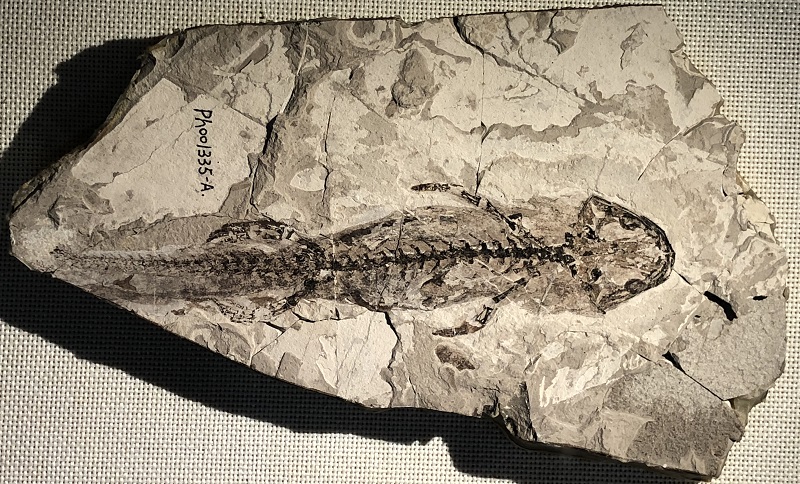BH Staff | September 11, 2022
Age and Locality: Later Jurassic, Inner Mongolia.

Chunerpeton tianyiensis is an extinct species of temnospondyl amphibian from the Early Cretaceous period, specifically from the Jehol Biota, known for its exceptional fossil preservation. The fossils of Chunerpeton tianyiensis have been found in the Yixian Formation in Liaoning Province, China, which is renowned for providing detailed insights into the life of the Early Cretaceous, approximately 125 million years ago.
This species is part of the group called temnospondyls, which were a diverse and widespread assembly of Paleozoic and Mesozoic amphibians. Temnospondyls are considered to be ancestors of modern amphibians, and they exhibit a wide range of sizes, shapes, and lifestyles. Chunerpeton tianyiensis, in particular, contributes valuable information to our understanding of the evolutionary history of amphibians.
Chunerpeton tianyiensis was relatively small in size, with a well-preserved skeleton that includes details of its skull, vertebral column, and limbs. This detailed preservation allows scientists to study its anatomical features closely, providing insights into its lifestyle and habitat preferences. The morphology of Chunerpeton suggests it was a semi-aquatic creature, likely inhabiting freshwater environments such as rivers, lakes, and swamps within the lush and biodiverse ecosystems of the Jehol Biota.
The diet of Chunerpeton tianyiensis likely consisted of small aquatic invertebrates and possibly fish, similar to modern amphibians. Its physical characteristics, such as a broad, flat head and a body adapted for an aquatic lifestyle, indicate it was well-suited to catching prey in water.
The discovery and study of Chunerpeton tianyiensis have significant implications for paleontology and evolutionary biology. It provides a crucial link in understanding the evolutionary transitions and ecological adaptations of early amphibians, shedding light on the complexity and diversity of ancient ecosystems. Furthermore, the exceptional preservation of Chunerpeton and other Jehol Biota specimens offers a unique window into the past, illustrating the evolutionary pathways that led to modern amphibians and their predecessors.
